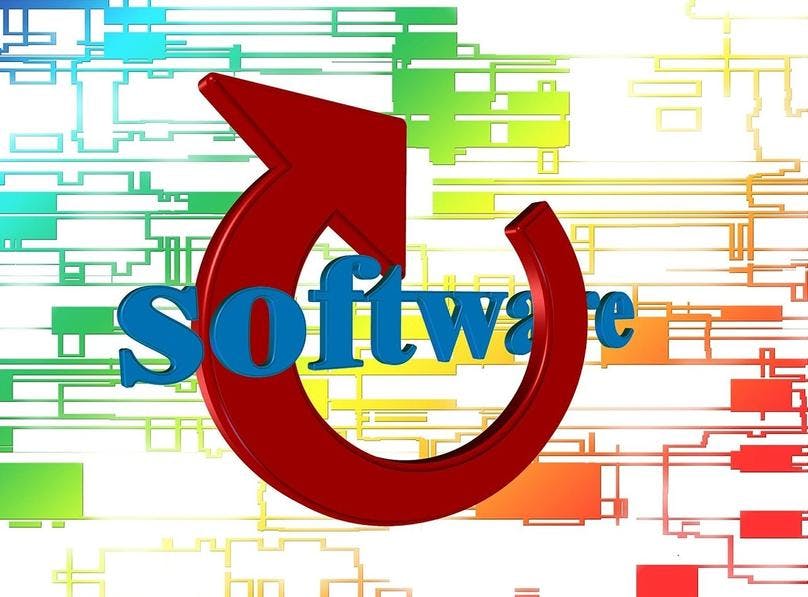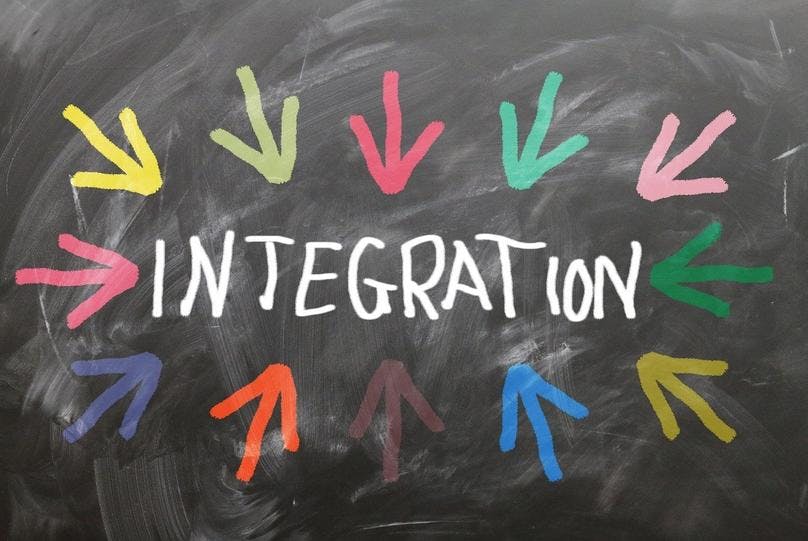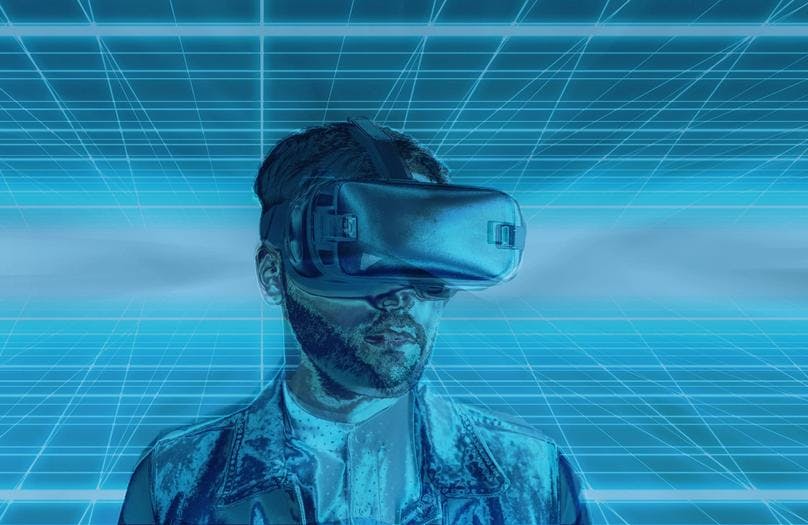
Speak, Dont Type: How Voice-to-Text Technology is Revolutionizing Communication
Step into a world where words flow effortlessly from your lips to the page. Voice-to-text technology is revolutionizing communication, leaving behind the constraints of typing. Discover how this groundbreaking innovation is changing the game, saving time, and unlocking new levels of efficiency.
In our fast-paced lives, every second counts. Imagine converting your spoken words into written text with astonishing accuracy and no more struggling to keep up with emails, messages, or documents. Voice-to-text technology frees your thoughts to flow unhindered.
Beyond saving time, this technology offers accessibility and inclusivity. It empowers individuals with physical disabilities to express themselves easily and lets students capture lectures without frantically taking notes. Say goodbye to typing-related strains and injuries, and welcome comfort and well-being.
Explore the inner workings of voice-to-text technology, discover its benefits across various fields, and overcome potential challenges. Learn practical tips to optimize your voice-to-text experience, empowering you to communicate effortlessly. Embrace the power of voice-to-text technology and step into a future where communication knows no bounds.
Evolution of Voice-to-Text Technology
The journey of voice-to-text technology can be traced back to the early attempts at voice recognition. In the mid-20th century, researchers began exploring the possibilities of converting spoken words into written text. These initial endeavors faced significant challenges due to the limitations of computing power and the complexity of human speech. The accuracy of early voice recognition systems was modest, often struggling with different accents, speech variations, and background noise.

Advancements leading to accurate voice-to-text conversion:
Over the years, advancements in technology and the advent of machine learning and artificial intelligence have propelled voice-to-text technology forward. One key breakthrough was the introduction of Hidden Markov Models (HMM) in the 1970s, which allowed for improved speech recognition capabilities. This laid the foundation for further research and development in the field.
In the 1990s and early 2000s, integrating statistical modeling techniques and using large speech databases led to substantial improvements in accuracy. The emergence of powerful processors and increased computational capabilities enabled more sophisticated algorithms to be employed, enabling better speech recognition and language processing. These advancements paved the way for the next generation of voice-to-text technology.

Popular voice-to-text software and applications:
Today, we witness the culmination of decades of innovation with the availability of popular voice-to-text software and applications. Companies like Apple, Google, Microsoft, and Amazon have invested heavily in voice recognition technology, making it accessible.
Apple's Siri, introduced in 2011, was one of the pioneering voice assistants to gain widespread attention. Siri demonstrated the potential of voice recognition for everyday tasks like setting reminders, making calls, and sending messages. Since then, other major players have entered the field, such as Google Assistant, Amazon Alexa, and Microsoft's Cortana, each offering unique features and integrations.
Furthermore, voice-to-text technology has found its way into various applications and industries. Transcription services, for instance, have been revolutionized by the ability to convert audio recordings into text with remarkable accuracy. Professionals in journalism, research, and legal services have greatly benefited from these advancements, streamlining their workflows and increasing productivity.
In addition, voice-to-text technology has become a valuable tool for content creators, podcasters, and video producers. It allows them to transcribe and caption their audio and video content efficiently, making it accessible to a wider audience and improving search engine optimization.
The popularity of voice-to-text technology has also extended to the mobile realm, with virtual keyboards offering voice input as an alternative to traditional typing. This feature has become a staple for mobile devices, enhancing convenience and providing an intuitive way to compose messages and emails.
As technology evolves, we can expect even more sophisticated voice-to-text software and applications, further expanding its capabilities and integration into various aspects of our lives.
The evolution of voice-to-text technology has been remarkable, overcoming initial challenges and progressing toward accurate and efficient speech recognition. From early attempts at voice recognition to the advent of advanced algorithms and powerful processors, we now enjoy the benefits of popular voice-to-text software and applications that have transformed how we interact with technology. The future holds endless possibilities as voice-to-text technology continues shaping how we communicate and interact with the digital world.
How Voice-to-Text Technology Works
Voice-to-text technology is an intricate process that converts spoken words into written text with remarkable accuracy. At its core, this technology utilizes sophisticated algorithms and techniques to analyze and interpret human speech.
Key components and processes involved:
The functioning of voice-to-text technology can be divided into several key components and processes. Firstly, the audio input, which consists of spoken words, is captured through a microphone. This audio data is then passed through various stages of processing.
Speech Recognition: The audio data goes through speech recognition, where the technology analyzes spoken words' acoustic patterns and phonetic characteristics. This involves breaking the audio into smaller units, such as phonemes, and mapping them to corresponding textual representations.
Language Processing: After recognizing the individual words, the technology employs language processing techniques to decipher the intended meaning and context of the spoken words. This involves analyzing grammar, syntax, and semantic structures to generate coherent and accurate text.
Text Generation: Once the spoken words have been transcribed and interpreted, the voice-to-text technology generates the corresponding written text. This text can be displayed in real-time as the speech is recognized or stored for later use.

Machine learning and artificial intelligence in voice recognition:
Machine learning and artificial intelligence play a significant role in enhancing the accuracy and performance of voice-to-text technology. Using vast amounts of data, algorithms are trained to recognize patterns and make predictions based on input speech.
Training the Models: Machine learning algorithms are trained using large datasets that contain paired audio and corresponding transcriptions. These models learn to recognize patterns and associations between the acoustic features of speech and the corresponding textual output. This training process allows the models to improve their accuracy over time.
Continuous Learning and Adaptation: Voice-to-text technology often utilizes adaptive machine learning algorithms to learn and adapt to different speech patterns and accents continuously. As users interact with the technology and provide feedback, the models can fine-tune their predictions and improve their performance for individual users.
Neural Networks: Deep neural networks, an artificial intelligence model, are commonly used in voice recognition. These networks can handle complex speech recognition tasks by mimicking the structure and functionality of the human brain. Deep neural networks excel at capturing intricate speech patterns and improving voice-to-text conversion accuracy.
By leveraging machine learning and artificial intelligence, voice-to-text technology continually refines its ability to convert spoken words into written text accurately. The integration of these technologies enables the system to adapt to individual speech patterns, enhance accuracy, and improve overall performance.
Benefits of Using Voice-to-Text Technology for Typing
In today's fast-paced world, time is of the essence. Voice-to-text technology significantly boosts efficiency and productivity compared to manual typing. With voice dictation, your words can flow seamlessly, resulting in a faster typing speed. The ability to speak your thoughts directly eliminates the need to physically type each word, allowing you to effortlessly transcribe your ideas and complete tasks in a fraction of the time it would take with traditional typing methods. This newfound speed and efficiency enable you to accomplish more in your work or personal endeavors.
Furthermore, voice-to-text technology allows for multitasking capabilities while dictating text. You can simultaneously perform tasks such as brainstorming ideas, reviewing documents, or conducting research while speaking your thoughts. This multitasking capability optimizes your workflow, enabling you to maximize your time and achieve greater productivity.

Accessibility for individuals with physical disabilities:
One of the most remarkable benefits of voice-to-text technology is its accessibility for individuals with physical disabilities. People with mobility impairments, such as paralysis or limited dexterity, often face significant typing challenges. Voice-to-text technology empowers these individuals by providing an alternative method to communicate and interact with digital devices.
Moreover, voice-to-text technology enhances communication for individuals with conditions like dyslexia. These individuals may struggle with traditional typing methods due to difficulties with spelling, grammar, or letter reversals. Using voice dictation, they can express themselves more accurately and confidently, overcoming the barriers imposed by their condition. Voice-to-text technology opens new avenues for communication and fosters inclusivity and equal access to information.
Reduction in typing-related strain and injuries:
Typing for extended periods can lead to various physical strains and injuries, particularly in the hands, wrists, and arms. Voice-to-text technology offers a welcome respite from these ailments by reducing the need for repetitive manual typing.
Voice-to-text technology promotes long-term health and well-being by minimizing the risk of repetitive strain injuries (RSIs) associated with typing. Users can avoid conditions such as tendonitis or bursitis, which the repetitive typing motion can cause. Additionally, voice-to-text technology alleviates discomfort caused by conditions like carpal tunnel syndrome, where the compression of nerves in the wrist leads to pain and numbness. By eliminating the physical strain of typing, individuals can enjoy a more comfortable and sustainable approach to text input.
The benefits of using voice-to-text technology for typing are manifold. It offers increased efficiency and productivity through faster typing speeds and multitasking capabilities. The technology also promotes accessibility, empowering individuals with physical disabilities to communicate and participate in digital interactions more effectively. Furthermore, voice-to-text technology reduces the risk of typing-related strain and injuries, providing a more comfortable and sustainable approach to text input. Embracing voice-to-text technology unlocks a world of possibilities where typing becomes effortless, inclusive, and conducive to improved well-being.
Voice-to-Text Technology in Various Fields
Voice-to-text technology has become a game-changer in the business world, offering various applications to enhance efficiency and streamline processes. Transcription services and note-taking, once time-consuming tasks, are now simplified and accelerated. Professionals can dictate meeting minutes, interviews, or important memos, allowing for accurate and instant transcription without manual typing. This saves time and ensures that important details are captured with precision.
Additionally, voice-to-text technology streamlines documentation processes. From creating reports and proposals to composing emails and correspondence, professionals can speak their thoughts and have them seamlessly converted into written text. This eliminates the need to juggle multiple tasks, such as typing while trying to articulate ideas. By leveraging voice-to-text technology, professionals can focus on the content and message they want to convey, leading to improved productivity and effective communication.
Educational applications:
Voice-to-text technology has significant implications in education, revolutionizing how students interact with information and express their thoughts. It assists students with note-taking and research, enabling them to capture lectures and classes effectively. By dictating their notes instead of manually writing them, students can focus on actively listening and engaging with the material, leading to a deeper understanding and retention of knowledge.
Moreover, voice-to-text technology is crucial in enabling accessibility in classrooms and lectures. Individuals with disabilities, such as those with mobility impairments or dyslexia, can use voice dictation as an alternative input method. This ensures that all students have equal opportunities to participate, learn, and contribute to academic settings, fostering inclusivity and supporting diverse learning needs.
Creative and content creation industries:
Voice-to-text technology has widespread adoption in creative and content creation industries, transforming how professionals in these fields work. Authors and journalists benefit from enhanced writing workflows, as they can speak their ideas and stories, allowing their thoughts to flow naturally and uninterrupted. This streamlines the writing process, sparks creativity, and reduces the barriers posed by typing, resulting in more efficient and engaging content creation.
Similarly, voice-to-text technology facilitates content creation for podcasters and video creators. Instead of manually transcribing and captioning their audio or video content, creators can rely on voice dictation to generate accurate text in a fraction of the time. This saves valuable production time and improves accessibility for a wider audience, as captions and transcriptions make the content more inclusive and searchable.
Overall, voice-to-text technology has made a profound impact in various fields. It simplifies transcription and documentation processes in the business and professional realm, enhancing productivity and communication. In education, it assists students with note-taking and ensures inclusivity in classrooms. Finally,

Challenges and Limitations of Voice-to-Text Technology
While voice-to-text technology has made significant strides in accuracy, it still faces challenges in achieving perfect transcription and contextual understanding. Dealing with homophones, words that sound alike but have different meanings, can pose difficulties for the technology. Distinguishing between "there," "their," and "they're," for example, requires a deep understanding of the context that is often challenging for automated systems.
Moreover, handling regional accents and speech variations presents another hurdle. Accents and dialects can significantly impact speech patterns, making it challenging for voice recognition systems to transcribe spoken words accurately. The technology must continually adapt and evolve to recognize various accents and variations to ensure reliable transcription for users across diverse linguistic backgrounds.

Privacy and security concerns:
As with any technology that involves personal data, privacy and security concerns are paramount when it comes to voice-to-text technology. Data storage and handling present potential risks if not appropriately managed. Voice recordings and transcriptions may contain sensitive or confidential information, making it essential to have robust security measures in place to protect user privacy.
Furthermore, the potential risks of voice data misuse are a significant consideration. Voice recordings, such as voice cloning or impersonation, can be exploited for unauthorized purposes. Safeguarding voice data from unauthorized access and ensuring secure storage and transmission is crucial to maintain user trust and protect against potential misuse.
While advancements in encryption and secure data management protocols continue to address these concerns, ongoing vigilance and investment in privacy and security measures are necessary to mitigate risks effectively.
Although voice-to-text technology faces certain challenges and limitations that require ongoing attention and innovation, ensuring accuracy and contextual understanding remains a priority, particularly when dealing with homophones and regional speech variations. Additionally, addressing privacy and security concerns by implementing robust data protection measures is crucial to safeguard user information and prevent potential misuse. By continuously addressing these challenges, voice-to-text technology can continue to evolve and improve, providing users with reliable, secure, and efficient speech-to-text conversion capabilities.
Tips for Effective Use of Voice-to-Text Technology
Environment and microphone optimization:
Creating the right environment and optimizing your microphone setup are crucial factors for achieving accurate voice recognition when using voice-to-text technology. By paying attention to these aspects, you can significantly enhance the quality and clarity of your audio input, resulting in more precise and reliable transcriptions.
Choosing a quiet and distraction-free environment is essential for optimal voice recognition. Find a location where you can minimize external disturbances and interruptions. Avoid noisy areas, such as bustling coffee shops or rooms with loud appliances, as background noise can interfere with the technology's ability to capture your voice accurately. Opting for a serene and peaceful environment allows the system to focus solely on your speech, leading to more accurate transcriptions.
Positioning the microphone appropriately is another crucial aspect of microphone optimization. Ensure the microphone is placed at an optimal distance from your mouth for clear audio capture. Position it too close, and you may introduce unwanted distortion or plosive sounds, which can affect the accuracy of the transcriptions. Conversely, placing the microphone too far away may result in a weak and unclear audio signal, leading to inaccurate transcriptions. Experiment with microphone placement to find the sweet spot that provides clear and balanced audio capture.
In addition to choosing a quiet environment and positioning the microphone properly, minimizing background noise and echoes is vital to ensure accurate voice recognition. Background noise, such as traffic sounds or conversations in the vicinity, can create unwanted audio interference, leading to distorted or misinterpreted transcriptions. Consider using noise-canceling features or tools that can help mitigate these external noises and improve the accuracy of the voice recognition system.
Echoes can also impact the quality of your audio input. They occur when sound waves bounce off surfaces in the room, resulting in overlapping and muddled audio signals. You can employ soundproofing measures or acoustic treatments in your recording space to minimize echoes. These can include soft materials like carpets, curtains, or foam panels that absorb sound reflections, ensuring a cleaner audio signal and reducing the chances of distorted transcriptions.
By choosing a quiet and distraction-free environment, positioning your microphone appropriately, and minimizing background noise and echoes, you can optimize the voice-to-text technology's ability to capture and transcribe your speech accurately. These considerations will contribute to a smoother and more effective user experience, allowing you to convert your voice into written text precisely and easily effortlessly.
Articulation and pacing techniques:
When using voice-to-text technology, effective articulation and pacing techniques play a vital role in improving accuracy and ensuring that your intended message is accurately transcribed. By paying attention to how you articulate your words and the pace at which you speak, you can enhance the overall quality and clarity of the transcriptions.
Speaking clearly and enunciating words is crucial for accurate voice recognition. Take the time to pronounce each word distinctly, emphasizing their sounds. Articulate consonants and vowels clearly, avoiding slurring or mumbling. By enunciating your words, you provide voice-to-text technology with a clearer and more precise audio input, resulting in more accurate transcriptions.
Using proper punctuation cues and vocal emphasis helps convey meaning effectively. Voice-to-text technology can benefit from vocal cues that indicate punctuation marks, such as saying "comma," "period," or "question mark" to denote the desired punctuation in the transcribed text. Similarly, utilizing vocal emphasis, such as raising or lowering your voice or adjusting your tone, can help express the intended emphasis or emotion behind certain words or phrases. These vocal cues and emphasis help the technology understand the context and accurately transcribe your speech, preserving the intended meaning of your words.
Maintaining a natural rhythm and avoiding extremes in speaking speed is important for optimal voice recognition. Speaking too fast can overwhelm the system, leading to inaccuracies and missed words. On the other hand, speaking too slowly can disrupt the flow of your thoughts and make the dictation process less efficient. Strive for a comfortable and natural pace that allows for clear enunciation while maintaining a consistent and coherent rhythm. This helps the voice-to-text technology accurately capture and transcribe your speech, ensuring a smoother and more accurate transcription experience.
By focusing on speaking, utilizing proper punctuation cues and vocal emphasis, and maintaining a natural speaking pace, you can improve the accuracy and effectiveness of voice-to-text technology. These articulation and pacing techniques enhance the quality of the audio input, providing the technology with the necessary clarity and context to generate accurate transcriptions. Embrace these techniques to effortlessly convert your spoken words into written text while ensuring the fidelity and integrity of your message.
Editing and proofreading strategies:
After using voice-to-text technology to transcribe your speech into written text, it's essential to employ effective editing and proofreading strategies. These strategies allow you to review, correct, and refine the transcribed text, ensuring its accuracy, clarity, coherence, and proper formatting.
Reviewing the transcribed text for errors or misinterpretations is the first step in the editing process. Carefully read through the transcribed text while comparing it with your original speech or intended message. Look for any inaccuracies, missing words, or misinterpretations that may have occurred during the voice-to-text conversion. Pay attention to punctuation, grammar, and sentence structure to ensure that the transcribed text accurately reflects your intended meaning.
To make corrections efficiently, take advantage of voice commands or editing tools the voice-to-text software provides. These features allow you to make corrections, insert punctuation marks, delete or replace words, and format the text using voice commands or intuitive editing interfaces. Familiarize yourself with the available commands and tools, as they can significantly streamline the editing process and save time.
Once you have made the necessary corrections using voice commands or editing tools, it's important to proofread the final text for clarity, coherence, and proper formatting. Proofreading involves:
- Carefully read the entire document.
- Focusing on grammar, spelling, and punctuation.
- Overall readability.
Check for any remaining errors or inconsistencies and make additional adjustments as needed. Ensure that the text flows smoothly, ideas are presented clearly, and sentences are properly structured.
During the proofreading stage, pay attention to the formatting of the text as well. Ensure that paragraphs are appropriately indented, headings and subheadings are formatted consistently, and any specific formatting requirements (such as italics or bold) are applied correctly. Proofreading also includes checking for proper capitalization, accurate use of quotation marks, and adherence to any specific style guides or formatting guidelines.
By diligently reviewing, using voice commands or editing tools to make corrections efficiently, and thoroughly proofreading the final text, you can ensure that your transcribed content is accurate, coherent, and well-presented. These editing and proofreading strategies help refine the transcribed text, ensuring that it meets your clarity, coherence, and professionalism standards. Utilize these strategies to fine-tune your voice-to-text transcriptions and produce high-quality written content.
Future Trends and Potential Developments
Voice-to-text technology has come a long way, and its evolution shows no signs of slowing down. As we look to the future, several exciting trends and potential developments are poised to enhance this innovative technology further, opening up new possibilities and applications across various domains.

Integration With Smart Home Devices
Integration with smart home devices and the Internet of Things (IoT) represents a promising direction for voice-to-text technology. As smart homes become increasingly prevalent, voice commands can be utilized to control a wide range of devices and systems, from adjusting lighting and temperature settings to managing appliances and security systems. Voice-to-text technology can provide a seamless interface, allowing users to interact with their smart homes through natural speech. This integration enhances convenience and paves the way for more sophisticated voice-driven automation and personalized experiences.

Improved Voice Recognition Through AI Advancements
Another area of future development lies in improved voice recognition through artificial intelligence (AI) advancements. Machine learning algorithms and neural networks continuously evolve, enabling voice-to-text technology to understand better and interpret natural language. AI-powered voice recognition algorithms can adapt and learn from user input, resulting in higher accuracy and improved contextual understanding. This means that voice-to-text technology will become even more proficient at deciphering speech nuances, handling regional accents, and accurately transcribing complex phrases and contexts.

Potential Applications in Virtual Reality (VR) and Augmented Reality (AR)
The potential applications of voice-to-text technology in virtual reality (VR) and augmented reality (AR) hold great promise. As VR and AR technologies continue to advance, integrating voice-to-text capabilities can enhance user experiences by providing a more immersive and intuitive interface. In VR, voice commands can be used to navigate virtual environments, interact with virtual objects, or communicate with other users. In AR, voice-to-text technology can overlay real-time transcriptions or translations onto the user's field of vision, enabling seamless and instant communication in various contexts, such as language learning or professional collaborations.
Furthermore, the future of voice-to-text technology may witness developments in multilingual capabilities. As globalization continues to connect people from diverse linguistic backgrounds, voice-to-text technology has the potential to bridge language barriers. Advanced algorithms and machine learning techniques can enable real-time language translation, facilitating effective communication between individuals speaking different languages.
Additionally, voice-to-text technology could evolve to incorporate emotion recognition, allowing it to detect and interpret emotional cues in speech. This development would enable more nuanced and personalized interactions, supporting applications in fields such as mental health, customer service, and entertainment.
As we embrace these future trends and potential developments, addressing any ethical and privacy concerns associated with voice-to-text technology is important. Safeguarding user data, ensuring consent, and maintaining robust security measures will be crucial for these advancements' widespread adoption and acceptance.
The future of voice-to-text technology holds immense promise, with integration into smart homes, AI-driven voice recognition improvements, and VR and AR applications. These developments can potentially revolutionize how we interact with technology, opening up new horizons for communication, automation, and personalization. By staying at the forefront of these advancements and addressing their challenges, we can unlock the full potential of voice-to-text technology in shaping the future of human-machine interaction.
FAQs
How does voice texting work?
Voice texting converts spoken words into written text using voice recognition technology. The audio input is processed and analyzed to transcribe the speech into text.
Can my computer do voice-to-text?
Yes, many computers have built-in voice-to-text capabilities. Operating systems like Windows and macOS offer native voice-to-text functionalities that can be accessed through settings or applications.
Is voice-to-text technology assistive or adaptive?
Voice-to-text technology is considered both assistive and adaptive. It assists individuals by providing an alternative method of input for typing, and it adapts to different speech patterns and accents to accurately transcribe spoken words.
Is Google speech-to-text free?
Yes, Google offers a speech-to-text service called Google Cloud Speech-to-Text. While it provides a free tier with limitations, paid options are also available for more extensive usage.
What technology is used for voice recognition?
Various technologies are used for voice recognition, including machine learning algorithms, deep neural networks, and natural language processing (NLP) techniques. These technologies analyze audio input to identify patterns and convert speech into text.
How do you do voice-to-text?
You typically need a device or software that supports voice recognition to do voice-to-text. Activate the voice input feature, and speak your words clearly; the technology will transcribe your speech into text in real-time or after processing the audio input.
Conclusion
In conclusion, voice-to-text technology has revolutionized communication and interaction with digital devices. It offers numerous benefits, including increased efficiency, accessibility for individuals with disabilities, and reduced typing-related strain. Its applications span across various fields, from business and education to creative industries. While there are challenges such as accuracy and privacy concerns, effective use of the technology through environment optimization, articulation techniques, and editing strategies can overcome these limitations. Looking ahead, integration with smart devices, AI advancements, and potential applications in VR and AR hold tremendous promise. As we embrace these future trends, voice-to-text technology continues to evolve, paving the way for a more seamless and intuitive digital experience.
